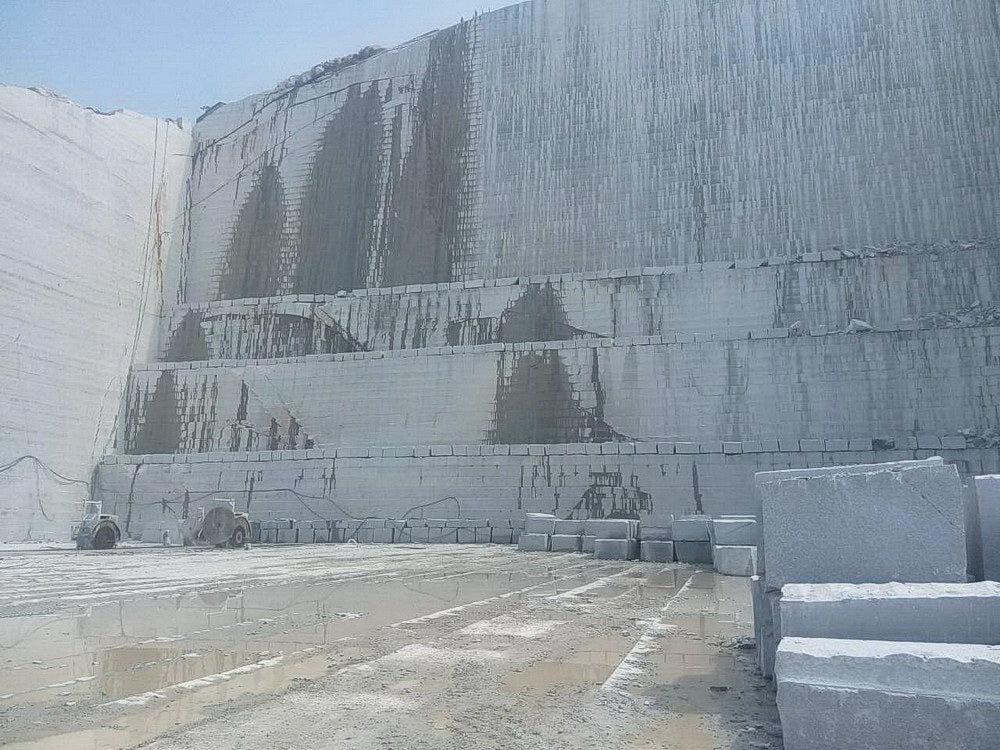Finding the Appeal of Granite Quarry in South Africa Wonders
Finding the Appeal of Granite Quarry in South Africa Wonders
Blog Article
Unveiling the Mysteries of Granite Quarrying: Where Toughness and Sophistication Meet
The globe of granite quarrying is a realm where the raw toughness of nature merges with human artistry to develop structures that stand the test of time with an air of sophistication. From the depths of quarries to the precise sprucing up in workshops, the process of changing granite into architectural marvels is a complicated dance of tradition and advancement. As we peer into the midsts of this old craft, we start to reveal the concealed details that form the really significance of our constructed setting.
The Origins of Granite Quarrying
In the record of architectural background, the origins of granite quarrying are shrouded in a tapestry of ancient workmanship and geological wonders. Dating back to ancient Egypt and Mesopotamia, the removal of granite from quarries marked the beginning of a trip that would eventually bring about the creation of some of the world's most legendary frameworks.
Granite quarrying's roots can be mapped to the proficient craftsmens that acknowledged the stone's durability and visual appeal. Via a mix of primitive devices and sheer resolution, these very early quarry employees unearthed granite blocks that would certainly end up being the structure blocks of people.
As human beings progressed, so did the strategies of quarrying granite. The Romans, renowned for their design prowess, established innovative methods for removing granite to construct monoliths, holy places, and roads that stood the examination of time.
The legacy of these old quarrying techniques remains to form modern-day style, with granite remaining a sign of toughness and elegance in construction jobs around the globe. (granite quarries in south africa)
Devices of the Quarrying Trade
The evolution of granite quarrying strategies from old civilizations to modern-day times highlights the crucial role played by the tools of the quarrying profession in shaping the sector's methods. In ancient times, quarrying devices were primary, often containing chisels, hammers, and wedges made from products like bronze or iron. These tools called for substantial workforce and time to essence granite blocks from quarries.

Additionally, the introduction of pneumatic devices and high-powered machinery has actually significantly lowered the physical labor called for in quarrying procedures, improving worker safety and performance. As the quarrying sector proceeds to innovate, the devices of the profession stay at the center of driving development and shaping the future of granite extraction.
Removing Blocks of Granite
Using accuracy equipment and progressed techniques, the removal of granite obstructs from quarries has actually become an innovative process in the contemporary quarrying industry. The initial step entails identifying the place and size of the granite down payment to determine one of the most effective extraction approach. When an ideal site is picked, the extraction procedure starts with the drilling of openings for the positioning of nitroglycerins. Regulated blowing up techniques are after that employed to disintegrate the granite into manageable areas.

Sprucing Up and Finishing Strategies
To achieve a flawless surface area on granite blocks, proficient artisans use a collection of careful sprucing up and completing strategies. After the first extraction and forming procedures, the granite blocks undertake a comprehensive sprucing up phase to boost their natural beauty and resilience. One usual method made use of in polishing granite is ruby abrasion, where industrial rubies are used to grind and brighten the stone to a smooth finish. This process not just creates a lustrous surface but also makes sure uniformity in color and structure throughout the granite block.
Along with polishing, completing strategies are related to further refine the granite's look. These methods Recommended Reading might consist of flaming, refining, or brushing, each offering distinct structures and surfaces to fit various visual preferences. Flaming, for example, entails revealing the granite surface area to heats to develop a rough, distinctive surface, ideal for outside applications where slip-resistance is important. Honing, on the various other hand, offers a matte coating that is smooth to the touch, perfect for indoor counter tops and floor covering. By thoroughly choosing and using these brightening and completing techniques, craftsmens can transform raw granite obstructs right into beautiful pieces that showcase both strength and elegance.

Environmental Effect and Sustainability
With the growing focus on ecological awareness in the market, granite quarrying methods are significantly scrutinized for their effect on natural sources and long-term sustainability. Additionally, the transportation of granite from quarries to refining centers creates carbon emissions, further adding address to ecological destruction.
To alleviate these impacts and make sure sustainability in granite quarrying, market stakeholders are taking on various procedures. Executing sophisticated modern technologies to decrease energy usage and water use, redeeming quarried land for ecological repair, and promoting accountable sourcing practices are some strategies being utilized. Furthermore, accreditations such as the Forest Stewardship Council (FSC) and the Leadership in Power and Environmental Layout (LEED) aid consumers determine eco pleasant granite items.
Verdict
Finally, granite quarrying is a procedure that needs specialized devices and methods to remove blocks of granite and brighten them to a high degree of surface. While the environmental impact of quarrying can be considerable, efforts are being made to boost sustainability methods in the industry. On the whole, granite quarrying is a fragile balance in between harnessing the toughness and sophistication of this all-natural rock while decreasing its effect on the setting.
Report this page